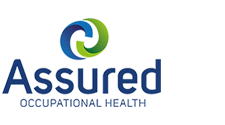It is vital to keep track of your employees’ health throughout their time with you. In many sectors, this is a requirement of the regulations and legislation governing the industry. However, it makes good economic sense to monitor and record your people’s health whatever their work environment.
Operating to the highest standards of clinical excellence, our teams can deliver statutory surveillance tests for exposure to dust, vibration, noise and other hazards. They can also complete baseline medicals at the start of employment, regular checks at agreed intervals throughout the employee’s career and an exit medical. These will help both you and the employee to address any health issues at an early stage.
Health Surveillance is important for:
- Introducing better controls at an early stage to detect ill-health effects of working environments
- Providing data to help employers evaluate health risks
- Providing employees with a platform for raising concerns on their workplace health
- Highlighting lapses in workplace control measures, therefore providing invaluable feedback to the risk assessment
- Introducing employee training and education
Health Surveillance can be used to help identify where more needs to be done to control risks and to empower employers to take action to prevent further harm and protect employees.
Assured can offer support at all levels of the Health Surveillance Cycle as outlined below:

At Assured we can support to design and implement health surveillance programs according to risk assessment findings.
Biological Monitoring:
Monitoring may be required for biological monitoring such as exposure to isocyanates or benzene confirming adequate controls in the workplace.
Audiometry Testing
Screening for hearing loss is required under The Control of Noise at Work Regulations 2005 to prevent or reduce the risk to health and safety from exposure to noise. This applies to all employees exposed at the upper action value and for those at increased risk of exposure to levels between the lower and upper action level.
Spirometry (Respiratory Test)
Is required under the Control of Substances Hazardous to Health Regulations 2002 (COSHH) for exposure to substances known to be hazardous and cause lung such as inhalation to chemicals and dust. A simple form is completed. The responses of the form are discussed with the healthcare professional. Blood Pressure is taken before the spirometry (Respiratory Test) is conducted. The results are evaluated and discussed with the employee. An Outcome Certificate containing the appropriate review date is sent to the Employer. Associated health promotion literature may be issued to the employee at the time of the appointment.
Skin Assessments
Occupational skin disease can result from work place exposure to known agents causing skin damage and requires suitable skin surveillance under COSHH (2002) and MHSW (1999).
A skin examination is performed by the healthcare professional and with your informed written consent a digital photograph may be taken of any present skin lesions of note. An Outcome Certificate containing the result and the appropriate review date is sent to the Employer. Associated health promotion literature can be issued to the employee at the time of the appointment. The appointment may take about 15 minutes, depending on the findings.
Sight Screening
Is a means of identifying individuals with defective vision that could result in a health and safety risk in the work place such as with Forklift Truck Drivers, Van and Company Car Drivers, close inspection drivers and where color vision is desirable or essential.
HAVS (Hand Arm Vibration Syndrome)
Under The Control of Vibration at Work 2005 an employer has a duty to assess vibration risks in those who regularly work with vibrating tools as they may develop Hand Arm Vibration Syndrome.
A simple form is completed. The responses on the form are discussed with the healthcare professional. If a HAVS Tier 3 and /or 4 Examination is undertaken further detailed tests are conducted. An outcome certificate containing the result and appropriate review date is sent to the Employer. The appointment may take between 10 and 60 minutes, depending of the Tier undertaken.

